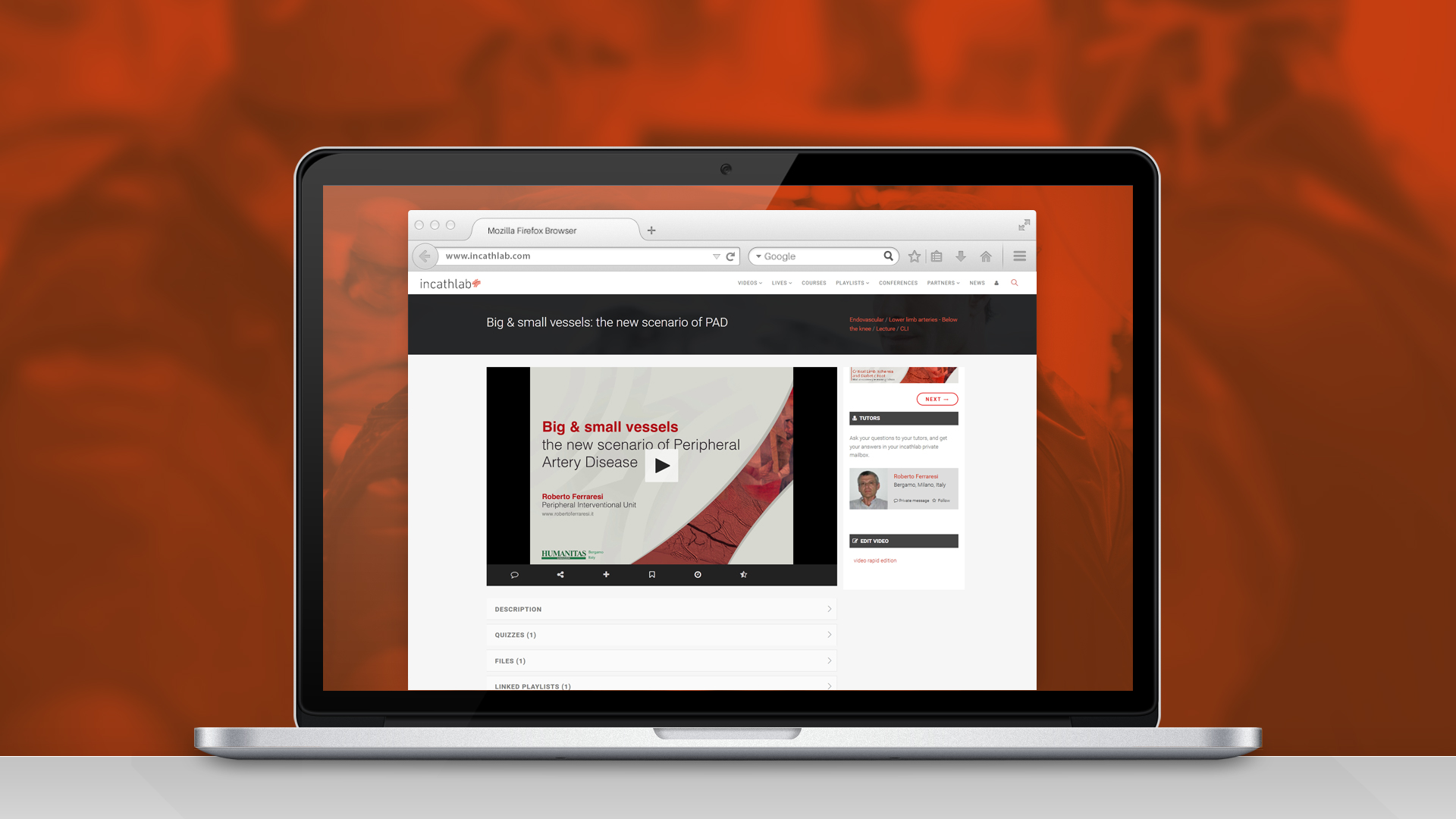
Devenez membre d'Incathlab et bénéficiez d'un accès complet !
Inscription Connexion
Principle of retrograde approaches
INDEX
Rationale
Clinical experience - Milan 2010/2014
Retrograde puncture - Key points
- Case 1
- Case 2
- Case 3
- Case 4
- Case 5
- Case 6
- Case 7
- Case 8
Transcollateral
The pedal-plantar loop technique
- Loop case 1
- Loop case 2
- Loop case 3
- Transcollateral case 1
- Transcollateral case 2
- Transcollateral case 3
Learning objective
Where an how to perform retrograde punctures
Learning point
Parallax technique; sheathless approach; rendez-vous techniques
Devices used
Support balloon : Armada 14 XT 1.5*20mm, 0.014" OTW - Abbott
Wires :
- Hi-Torque Pilot® 50-100-150-200, 0.014" - Abbott
- Hi-Torque Command, 0.014" - Abbott
- V18, 0.018" - Boston Scientific
Dernière mise à jour : 08/06/2021
Critical Limb Ischemia
The main goal of this Multidisciplinary School is to support clinicians to develop specific competencies in order to deal with and manage critical limb ischemia and diabetic foot disorders, to rein...



Majed A. Very good